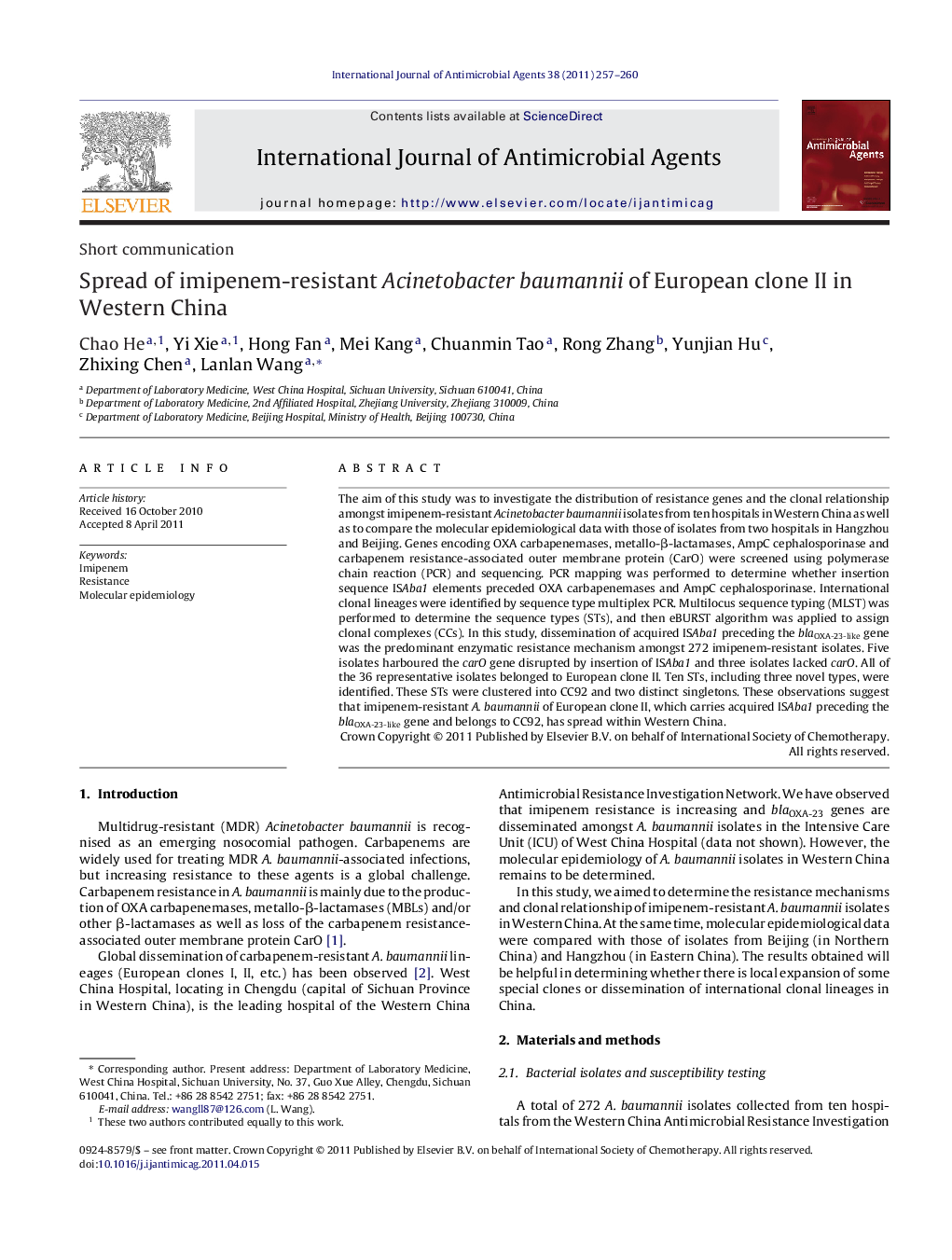| Article ID | Journal | Published Year | Pages | File Type |
|---|---|---|---|---|
| 3359466 | International Journal of Antimicrobial Agents | 2011 | 4 Pages |
The aim of this study was to investigate the distribution of resistance genes and the clonal relationship amongst imipenem-resistant Acinetobacter baumannii isolates from ten hospitals in Western China as well as to compare the molecular epidemiological data with those of isolates from two hospitals in Hangzhou and Beijing. Genes encoding OXA carbapenemases, metallo-β-lactamases, AmpC cephalosporinase and carbapenem resistance-associated outer membrane protein (CarO) were screened using polymerase chain reaction (PCR) and sequencing. PCR mapping was performed to determine whether insertion sequence ISAba1 elements preceded OXA carbapenemases and AmpC cephalosporinase. International clonal lineages were identified by sequence type multiplex PCR. Multilocus sequence typing (MLST) was performed to determine the sequence types (STs), and then eBURST algorithm was applied to assign clonal complexes (CCs). In this study, dissemination of acquired ISAba1 preceding the blaOXA-23-like gene was the predominant enzymatic resistance mechanism amongst 272 imipenem-resistant isolates. Five isolates harboured the carO gene disrupted by insertion of ISAba1 and three isolates lacked carO. All of the 36 representative isolates belonged to European clone II. Ten STs, including three novel types, were identified. These STs were clustered into CC92 and two distinct singletons. These observations suggest that imipenem-resistant A. baumannii of European clone II, which carries acquired ISAba1 preceding the blaOXA-23-like gene and belongs to CC92, has spread within Western China.
